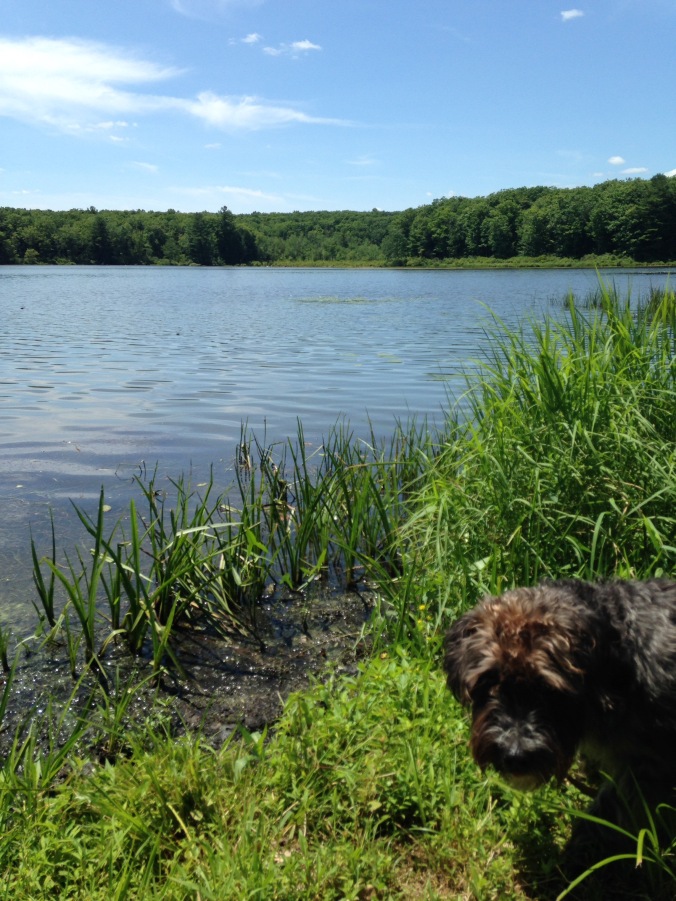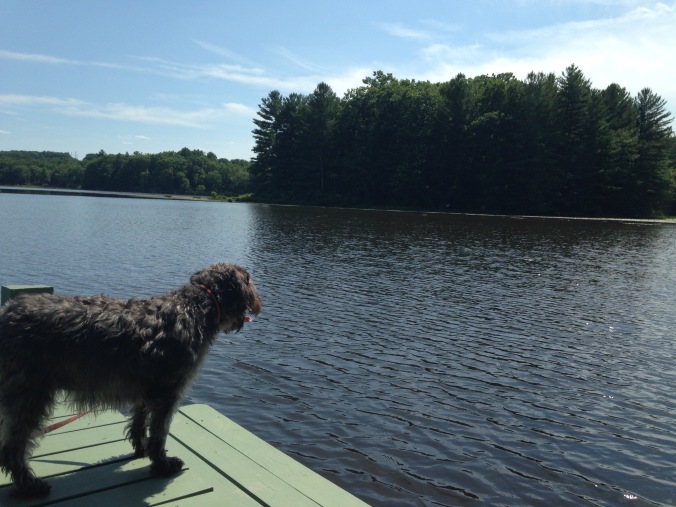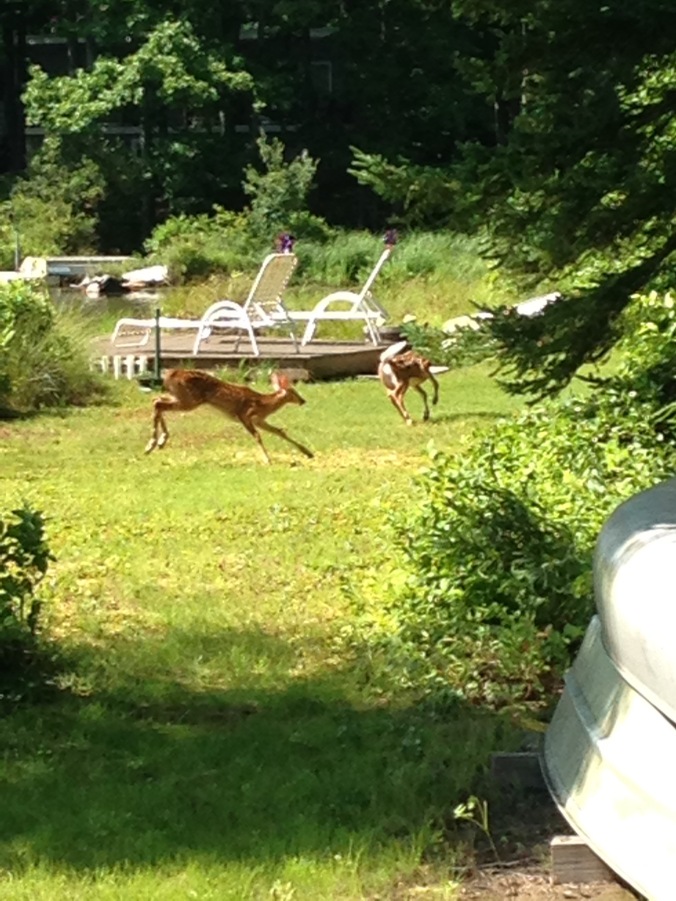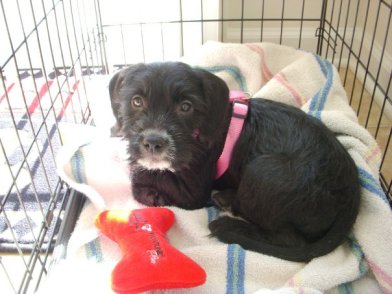Whether you have a reactive, hyper, calm, people-friendly, dog-friendly dog, it’s always important to talk their language. They don’t always understand what we say, in fact they only understand a few words we teach them. It’s important to understand what they are telling us.

Eyes up, looking at you, bottom sitting: please give me that treat, toy, food, or attention! If you train a lot it could be a sign for, “I’m ready for training!”

A very obvious sign of discomfort is licking the lips or nose. Dogs can do this for many reasons, including yummy food left on their nose. However, if they didn’t just enjoy a meal or treat they are sending a clear message-please back away/leave me alone/I’m uncomfortable. Oreo uses this language a lot. She does that when I’m taking pictures, when seeing a stranger, dog, or anything that makes her uncomfortable. If this doesn’t work, she will usually try to turn away, or move away. It’s important to pay attention to the smaller signals such as licking the lips-otherwise dogs can escalate to showing their teeth, growling, snapping, or even biting. They have many ways to tell us they are uncomfortable/scared/or want to be left alone, we just need to listen.


A dog who is staring or at attention is alert and sees something interesting/scary/etc. You may see your dog’s tail go rigid and up in the air frozen. You may also see your dog lift one paw in the air. This mean your dog senses something. In my case, this usually means something scary or super exciting is near. This could end up being a squirrel to chase, or a person/dog nearby. In the first picture Oreo is looking for a chipmunk in the woods-she hears the pitter patter of leaves. In the second picture, Oreo is ready to attack something super scary for her-the vacuum! She is saying I’m scared and I’m going to attack if you don’t move away! The signal of freezing, paw up, still tail up in the air, or staring helps me be ready for stimuli. I make sure I have my treats out and on alert for any loose dogs or brace myself for a squirrel chase!

These are my sister’s dogs. The play bow, or running side by side is usually a sign of-let’s play!! If you look, the dog on the right seems to be shifting his weight to move away, and his tail is a little stiffer in the air. This is because he’s saying-leave me alone-I’m old and tired little puppy! However, the pup on the left is saying come on-play with me!

Whale eye-notice her eye is very large-it’s not the cute puppy eyes that want food. Whale eye is when you can see the whites of your dog’s eyes. Usually this happens when your dog keeps their head in the same position but follows you with their eyes. Whale eye=stress. If your dog is showing the whites of his or her eyes it means they are stressed or uncomfortable. Oreo uses this many times too. I’m very thankful she communicates well now, and I can read her signals. In this picture she is uncomfortable because I am getting close with a scary camera. She is trying to tell me she is stressed. Oreo uses this many times when she is super tired/grouchy or feeling sick. If I want to play/pet her and she’s feel lousy we know she will watch us this way. If you have a food/space/toy/bone possessive dog, many times they will continue eating/playing/etc but watch you as you walk around or near them. Definitely back off & if you don’t have a positive trainer for that situation, make sure you get one!
Other ways our dogs communicate:
Yawning-if it’s in the morning-they are probably tired/waking up, however, yawning is usually a way for your dog to calm down. If she is stressed when we are walking, this will help calm her down. However, if your dog is doing this while you are doing something new, or are too close-this is a signal they are stressed.
Sniffing-maybe there is something interesting to smell, but if you are in a street or somewhere where your dog is sniffing incessantly it means I am ignoring what is stressing me out (usually a dog for Oreo).
Ears flat laying on head- This is a sign your dog is very stressed or scared. Oreo tends to only do this at the vet.
Shaking- I am sick or very scared.
Head turns or looks away– I want peace-I’m moving away from what is scary or stressful, please leave me alone. Oreo will do this sometimes with other dogs, but many times does it when she is very tired at night. Her thyroid is a continuing medical condition we are monitoring, but her levels cause her to be grouchy & very tired sometimes. When going to pet her in the evening, if she wants to be left alone, she turns her head away. It’s very smart of her & since she knows we listen to her it’s an easy way for her to tell us she’s uncomfortable.
Shaking whole body as if shaking off water after swimming (but not wet & didn’t go swimming)– I’m releasing stress! Oreo does this during our walks when she is stressed-I definitely reward this motion as she is trying to calm herself.
Panting- If it’s not very hot-then your dog is stressed. This happens on the way to the vet-Oreo pants very loudly.
Wagging tail-this can be complete opposites. Your dog could be very anxious, or very happy. Researchers now say that the direction of the tail wagging will tell you which one. They are saying that if the tail is wagging to the left the dog is anxious, to the right it means they are happy. I haven’t seen this, but I do read other signals with tail wagging. There have been times my parents thought Oreo was happy to see some neighbor or stranger because her tail was wagging, only to find if they brought her close she started jumping and trying to nip their shirt and barking. I personally think it’s hard to see the direction of the wag, so I look for panting, ears down, crouching, and other signals to show she is stressed. I fortunately know her so well I usually know when she is wagging her tail when she’s scared and take her out of the situation or give her more space. If you have any doubt-back out! Better safe than sorry.
Growling- this is a signal you need to take seriously, if you ignore this signal which means I’m really stressed-leave me alone, then it can escalate to snaps and bites. Oreo actually started growling at 8 months and we knew she was genetically reactive & pursued an excellent trainer.
Snaps-You aren’t listening-next step I’m biting. If you have a dog that snaps I recommend finding a positive trainer. Oreo did this when she was younger before we enlisted the help of a reactive trainer. We didn’t know when she was stressed and what was bothering her until we learned her language.
Biting-You didn’t listen, I was really scared/uncomfortable and asked you to leave me alone, but you didn’t.
Many times dog owners state that their dog was always so friendly and loving, but out of nowhere it bit their child/neighbor/friend, etc. Even friendly dogs who never show any snapping/biting/or growling can be pushed over the edge when they are being teased/tortured/or put in a very scary or uncomfortable situation. It is important for people to pay attention and listen to their language. We don’t speak the same language, but like meeting a person who speaks another language, their are signals or signs we can read to find out what the other person or canine is trying to tell us. Listen to what your dog is telling you.



























